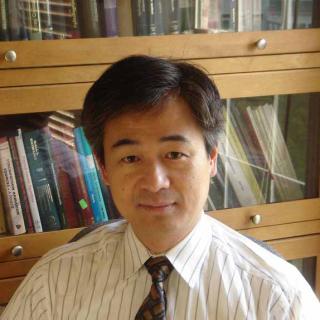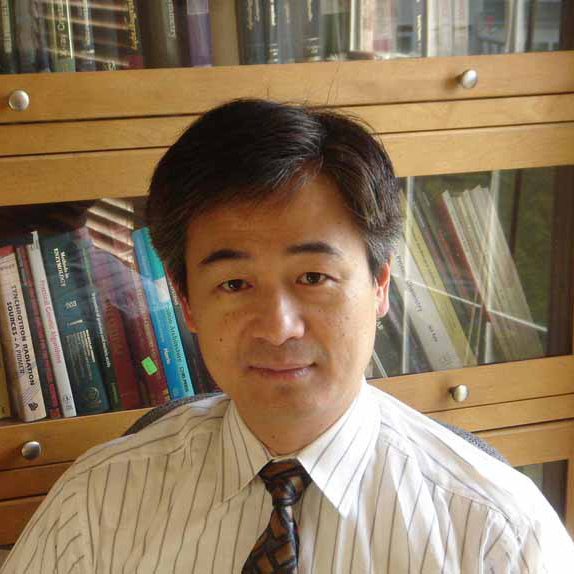
Di Xia, Ph.D.
- Center for Cancer Research
- National Cancer Institute
- Building 37, Room 2122C
- Bethesda, MD 20892-4256
- 240-760-7241
- dixia@helix.nih.gov
RESEARCH SUMMARY
Dr. Xia devotes his research to the structure and function relationship of membrane proteins at atomic resolution. He determined the crystal structures of Complex III or cytochrome bc1 complex of respiratory and photosynthetic apparatus and elucidated mechanisms of its function and antibiotic resistance. These works form the foundation that guides rational drug design against Complex III of pathogenic organisms.
Recently, Dr. Xia has focused his attention to the structural mechanism of multidrug resistance mediated by membrane transporters. Structural revelation of these transporters promise a detailed understanding of how diverse drugs are pumped and how resistance might be reversed.
Areas of Expertise

Di Xia, Ph.D.
Research
Structural Study of Biological Membrane Proteins
Recent advances in genome research revealed that over one-third of open reading frames in yeast (S. cerevisiae) are predicted to be integral membrane proteins with 1 to 14 transmembrane segments, reflecting the importance of membrane proteins in the life cycle of this unicellular eukaryotic organism. In multicellular organisms, cellular communication and interaction require increased biological complexity and likely an increased fraction of membrane proteins.
Membrane proteins provide vital cellular functions involved in cell-cell communication, recognition, adhesion, and membrane fusion; in material exchange, transportation and detoxication; and in processes of cellular energy conservation. Structural studies, especially those done by X-ray crystallography, on a limited number of membrane proteins have contributed significantly to our understanding of the function of these biological macromolecules.In the light of the increased number of membrane proteins being studied, the paucity of structural data of membrane proteins at atomic resolution creates a vacuum in our knowledge which is only being filled rather slowly. To date, only a limited number of families of membrane protein structures have been determined; most of them are of bacterial origin. The situation arises mainly due to tremendous difficulty in purifying sufficient quantity of most membrane proteins, especially those of eukaryotic origin, needed for structural analysis and in producing diffraction quality crystals; and failure in overexpressing membrane proteins only makes the situation worse.
My lab tries to use crystallographic methodology coupled various biochemical and biophysical techniques to explore the structure and function relations of polytopic membrane proteins by examining a few carefully selected membrane protein transporters such as those involved in cellular multidrug resistance (P-glycoprotein) and respiration (cytochrome bc1 complex of both mitochondria and bacteria). My lab have made great progresses in determining crystal structures of these large integral membrane protein complexes and structures defining reaction intermediates by trapping proteins in different conformations using specific inhibitors and substrates.
We also explore the possibility of using our atomic resolution knowledge to design and test novel chemical agents that specifically target these membrane proteins. We hope that these studies will result in our deep understanding of membrane protein architecture in general, and specifically the mechanisms of functions of these important biological membrane transporters, and in potential development of therapeutics for the benefit of mankind.
Publications
- Bibliography Link
- View Dr. Xia'a PubMed Summary.
Structures of AAA Protein Translocase Bcs1 Suggest Translocation Mechanism of a Folded Protein
A Spiral Path to Unfolding
Exome Sequencing of ABCB5 Identifies Recurrent Melanoma Mutations that Result in Increased Proliferative and Invasive Capacities
Hydrogen Bonding to the Substrate Is Not Required for Rieske Iron-Sulfur Protein Docking to the Quinol Oxidation Site of Complex III
In Search of a Cure for Proteostasis-Addicted Cancer: A AAA Target Revealed
Biography

Di Xia, Ph.D.
Dr. Xia obtained his Ph.D. in the field of structural virology from the Department of Biological Sciences, Purdue University, Indiana, and received his postdoctoral training in membrane protein structural biology with Dr. Deisenhofer at the University of Texas, Southwestern Medical Center at Dallas, Texas. He joined the Laboratory of Cell Biology at the NCI as a senior investigator in 1998.
Job Vacancies
We have no open positions in our group at this time, please check back later.
To see all available positions at CCR, take a look at our Careers page. You can also subscribe to receive CCR's latest job and training opportunities in your inbox.
Team
News
Learn more about CCR research advances, new discoveries and more
on our news section.
Resources
Protein Expression and Purification:
- New Brunswick fermentors (CelliGen 115 and Bioflo 3000)
- Shaking incubators
- Systems for Escherichia coli, Pichia pastoris, insect cells
- Two Akta FPLC systems
- PCR
Analysis:
- UV spectrophotometer (Shimadzu UV-2550)
- Isothermal titration calorimeter (MicroCal iTC200)
Crystallization:
- TTP Labtech Mosquito robots
- Cold room dedicated to crystallization
- Incubators at 4, 15, and 22 ºC
- Formulatrix Rock Imager with UV fluorescence
- Leica M205 C stereo microscope for nano-crystallography
- TTP Labtech Dragonfly solution maker
X-ray Crystallography:
- Rigaku rotating anode generator (HU3R, 50kV, 100 mA)
- Rayonix (MarUSA) MarDTB with detector
- Ample access to the SER-CAT beamline at Argonne National Lab
Computing:
- Modern workstations (including stereo graphics) and servers (Linux based)
- 100TB and 12TB local disk arrays
- Access to Biowulf (NIH supercomputer)
- Modern crystallographic software (Linux and OS X)
